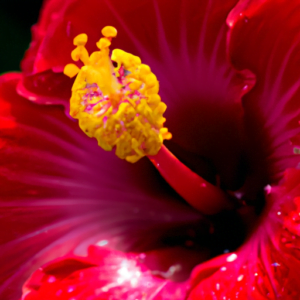Step into the captivating world of Gombey dance, a rich and vibrant traditional dance form native to Bermuda. In this article, you will explore the origins of Gombey dancing, tracing it back to its African and indigenous roots. Immerse yourself in the art and culture of this fascinating dance tradition, as you discover the unique blend of African rhythms, costumes, and storytelling that bring Gombey to life. Get ready to be enchanted by the energy and spirit of Gombey dancing, as you uncover the fascinating history behind this cultural treasure.
Table of Contents
ToggleThe History of Gombey Dance
Gombey dancing is a vibrant and captivating traditional dance form that holds deep cultural significance in Bermuda. It is rooted in a rich history that combines African and indigenous influences, making it a unique expression of Bermudian identity. By delving into the origins of Gombey dancing, we can better appreciate its cultural significance and understand its evolution over time.
African Influences on Gombey Dance
Africa played a pivotal role in shaping the foundation of Gombey dancing. The dance form traces its roots back to the era of the transatlantic slave trade, where enslaved Africans brought their rich dance traditions and cultural practices to Bermuda. These African dance traditions served as a means of preserving cultural identities and providing a sense of community and resistance amidst the harsh realities of slavery.
The Transatlantic Slave Trade and African Dance Traditions
During the cruelty of the transatlantic slave trade, Africans brought their diverse dance traditions to Bermuda. These traditions served as powerful expressions of emotions, celebrations, and storytelling. Elements such as rhythmic drumming, energetic movements, and elaborate costumes were integral to African dance, all of which can be seen in Gombey dancing today.
The Retention of African Cultural Practices in Bermuda
Despite the oppression and suppression faced by enslaved Africans, they managed to retain and pass on their cultural practices as a form of resistance and as a way of maintaining their identity. Gombey dancing, in particular, symbolizes the survival and resilience of African cultural practices in Bermuda. The dance not only pays homage to the ancestors but also serves as a reminder of the strength and spirit of the African heritage in the face of adversity.
Indigenous Influences on Gombey Dancing
While African influences strongly shaped the roots of Gombey dancing, there were also significant contributions from the indigenous people of Bermuda. The integration of indigenous cultural practices allowed for the evolution and enrichment of the dance form, adding a distinct local flavor.
The Indigenous People of Bermuda
The original inhabitants of Bermuda were the indigenous people, known as the Taíno, who settled on the island long before European colonization. Their cultural practices and traditions, which included dance and music, influenced the development of Gombey dancing. The exchange of cultural knowledge between the newcomers and the indigenous people laid the foundation for the unique fusion of African and indigenous elements in Gombey performances.
Cultural Exchange and Integration
Over time, cultural exchange and integration between the African and indigenous populations shaped Gombey dancing into the captivating art form it is today. The fusion of African and indigenous dance styles resulted in a dance that seamlessly blends rhythmic beats, vibrant movements, and symbolic costumes. This interplay between different cultural influences illustrates the power of cultural exchange in enriching and evolving dance traditions.
Distinctive Characteristics of Gombey Dancing
One cannot discuss Gombey dancing without exploring its distinctive characteristics that set it apart from other dance forms. The vibrancy and allure of Gombey performances lie in its colorful costumes, acrobatic movements, and rhythmic beats that captivate both the eyes and ears.
Colorful Costumes and Masquerade Tradition
One of the most visually striking aspects of Gombey dancing is the vibrant and elaborate costumes worn by the dancers. These costumes, adorned with bright feathers, sequins, and masks, serve to create a transformative experience for both the performers and the audience. The masquerade tradition in Gombey dancing allows dancers to embody different characters, evoking a sense of mystique and adding a theatrical element to their performances.
Acrobatic Movements and Rhythmic Beats
Gombey dancing is characterized by its energetic and acrobatic movements that command attention. Dancers perform intricate footwork, spins, and jumps, displaying agility and flexibility that captivate viewers. These movements are accompanied by the rhythmic beats of drums, bells, and whistles, creating a symphony of sound that sets the pace and intensity of the dance.
The Role of Gombey Dancing in Bermudian Culture
Beyond its aesthetic beauty and captivating performances, Gombey dancing holds immense cultural significance in Bermuda. It serves as a symbol of identity and pride, connecting people to their heritage and fostering a sense of belonging within the community.
Gombey Dancing as a Symbol of Identity
Gombey dancing is deeply ingrained in Bermudian cultural identity and serves as a visual representation of the island’s diverse history. The dance form has become a cherished tradition passed down through generations, preserving cultural heritage and fostering a sense of unity among Bermudians. For many, participating in Gombey dancing or simply witnessing the performances is a powerful and emotional experience that strengthens their connection to their roots.
The Preservation and Continuation of Gombey Dancing
As with any cultural tradition, the preservation and continuation of Gombey dancing require conscious efforts to ensure its survival. Through community organizations, dedicated performers, and educational initiatives, there is an ongoing commitment to passing down the art form to future generations. By nurturing the skills and knowledge of Gombey dancing, Bermudians ensure that this cherished tradition remains a vibrant part of their cultural fabric.
The Significance of Drumming in Gombey Dancing
Drumming lies at the heart of Gombey dancing, as it is the driving force behind the dynamic and rhythmic nature of the performances. The significance of drumming can be traced back to both African and indigenous cultural practices, where it played a central role in various aspects of life and served as a means of communication, storytelling, and spiritual connection.
The Importance of Drumming in African and Indigenous Cultures
In African cultures, drumming holds immense cultural and spiritual importance. It serves as a means of communication, allowing messages to be transmitted across long distances. Moreover, drumming is an integral part of rituals, ceremonies, and social gatherings, adding rhythm and energy to communal experiences.
Similarly, indigenous cultures in Bermuda incorporated drumming into their traditions, using it to celebrate victories, express emotions, and convey cultural narratives. The rhythmic beats of drums were powerful tools for invoking spiritual connections and fostering a sense of unity among community members.
Drumming Techniques and Instruments Used in Gombey Dancing
Gombey dancing incorporates a range of traditional drumming techniques and instruments to create its distinctive soundscape. The use of bass drums, snare drums, and kettle drums provides the foundation for the rhythmic beats that guide the dancers’ movements. Additionally, bells, whistles, and tambourines add depth and texture to the music, enhancing the auditory experience of Gombey performances.
The Symbolism and Meaning Behind Gombey Dancing
Gombey dancing is not merely a display of techniques and movements; it is a deeply symbolic art form that conveys spiritual, mythological, and social narratives. Each aspect of the dance holds a unique meaning, allowing performers to tell stories and evoke emotions.
Spiritual and Mythological References
Many elements of Gombey dancing are rooted in spiritual and mythological beliefs passed down through generations. The masks worn by dancers, for example, embody various spirits or characters from Bermudian folklore. These masks serve as a visual representation of the spiritual realm, connecting performers and viewers to ancestral traditions and beliefs.
Expressing Social and Historical Narratives
Gombey dancing is also a medium through which social and historical narratives are expressed. Each movement, costume, and rhythm carries with it a story that reflects the struggles, triumphs, and heritage of the Bermudian people. Through their performances, Gombey dancers pay homage to their ancestors, share their history, and highlight important social issues.
Gombey Dancing Festivals and Performances
To experience the magic of Gombey dancing in its full splendor, attending festivals and performances is a must. These events provide a platform for the community to come together and celebrate this unique cultural tradition.
The Bermuda Gombey Festival
The Bermuda Gombey Festival is an annual event where Gombey troupes from across the island showcase their skills and creativity. This festival serves as a vibrant celebration of Bermudian culture and offers visitors the opportunity to witness the awe-inspiring performances firsthand. The festival not only ensures the continued appreciation of Gombey dancing but also serves as a platform for intergenerational and intercultural exchange.
Traditional Gombey Dancing at Weddings and Celebrations
In addition to festivals, Gombey dancing can also be witnessed at various weddings and celebrations throughout Bermuda. The inclusion of Gombey performances in these significant life events adds a touch of cultural pride and joy. It serves as a way to honor traditions and create lasting memories for both the hosts and the attendees, ensuring the continued presence of Gombey dancing in Bermudian life.
Contemporary Adaptations and Innovations
While Gombey dancing remains deeply rooted in tradition, it has also adapted to the changing times and embraced elements of modern music and dance styles. These contemporary adaptations have allowed for the evolution of the dance form and its continued relevance in a globalized world.
Incorporation of Modern Music and Dance Styles
In recent years, Gombey dancing has seen an infusion of modern music genres, such as reggae, hip-hop, and soca. This blending of traditional rhythms with contemporary beats has given Gombey performances a fresh and dynamic feel, appealing to both younger audiences and those unfamiliar with the dance form. Additionally, dancers have incorporated elements of contemporary dance styles, adding fluidity and versatility to their movements.
Global Recognition and Influence
Despite its origins in Bermuda, Gombey dancing has gained recognition and influence on an international scale. Performances by Gombey troupes have been showcased at various cultural events and festivals around the world, helping to raise awareness of this unique art form. The global recognition has not only invited collaborations with artists from different cultural backgrounds but also fostered a sense of pride among Bermudians who see their cultural heritage celebrated on a global stage.
The Future of Gombey Dancing
While Gombey dancing continues to thrive, it also faces challenges and opportunities for preservation and development as it moves forward.
Challenges and Opportunities for Preservation
As with any traditional art form, Gombey dancing faces the challenge of maintaining its authenticity and cultural significance in a rapidly changing world. Preserving the knowledge, techniques, and narratives associated with Gombey dancing requires continuous dedication from the community and the exploration of innovative preservation methods. Engaging the younger generation through education and mentorship programs ensures that Gombey dancing remains a living cultural tradition.
Gombey Dancing as a Source of Inspiration
Gombey dancing has the potential to inspire creativity and cultural expression beyond the realm of traditional performances. The dynamic and captivating nature of the dance form can serve as a source of inspiration for other art forms, such as visual arts, music, and storytelling. By embracing new collaborations and interdisciplinary innovation, Gombey dancing can continue to evolve and captivate audiences for generations to come.
In conclusion, Gombey dancing stands as a testament to the vibrant and enduring culture of Bermuda. Its African and indigenous roots have greatly influenced the dance form, creating a powerful expression of identity and resilience. As Gombey dancing continues to evolve and adapt to the modern world, it remains a beloved tradition that reflects the essence of Bermudian cultural heritage. By appreciating its history, significance, and future potential, we can ensure that Gombey dancing continues to thrive as a symbol of Bermudian pride and artistic excellence.





